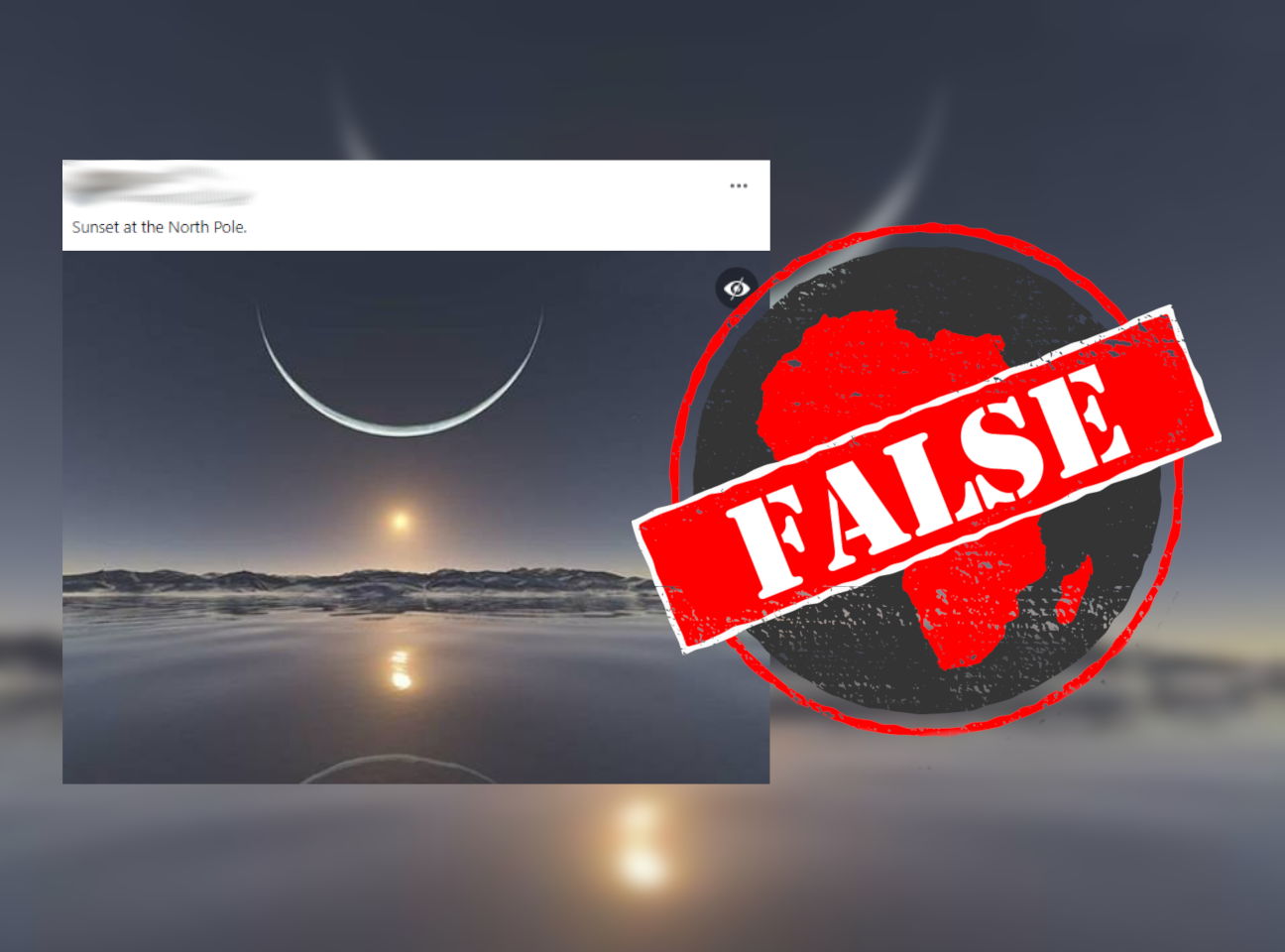An image of what appears to be the crescent moon above the sun, close to the horizon and both reflected in water, is doing the rounds on Facebook in South Africa – with the claim it shows sunset in the North Pole.
Africa Check has previously debunked false claims based on digitally rendered and manipulated images.
Let's do it again. Does the image really show sunset at the North Pole?

‘It is of course not a photo’
A Tineye reverse image search of the image led us to the page of artist Inga Nielsen on DeviantArt, a US-based online art community.
Nielsen posted in 2007 that the image had been created with Terragen and Photoshop, both rendering software which can also be used to digitally manipulate photographs.
Nielsen wrote: “After someone spread it on the web as photograph of a ‘Sunset at the north pole’, this image became quite popular. It is of course not a photo and it does not show a place anywhere near the terrestrial north pole.”
The image was so popular online that it was featured as the astronomy picture of the day on 20 June 2006 by the US National Aeronautics and Space Administration, or Nasa.
The space agency said: “Is this a picture of a sunset from Earth's North Pole? Regardless of urban legends circulating the Internet, the answer is no.”
“The scene could not exist anywhere on the Earth because from the Earth, the Moon and the Sun always have nearly the same angular size.”
The image has been posted online since at least 2006. It does not show a real image of the sunset at the North Pole, but an artist’s creation made with the help of software.
Republish our content for free
For publishers: what to do if your post is rated false
A fact-checker has rated your Facebook or Instagram post as “false”, “altered”, “partly false” or “missing context”. This could have serious consequences. What do you do?
Click on our guide for the steps you should follow.
Publishers guideAfrica Check teams up with Facebook
Africa Check is a partner in Meta's third-party fact-checking programme to help stop the spread of false information on social media.
The content we rate as “false” will be downgraded on Facebook and Instagram. This means fewer people will see it.
You can also help identify false information on Facebook. This guide explains how.


Add new comment